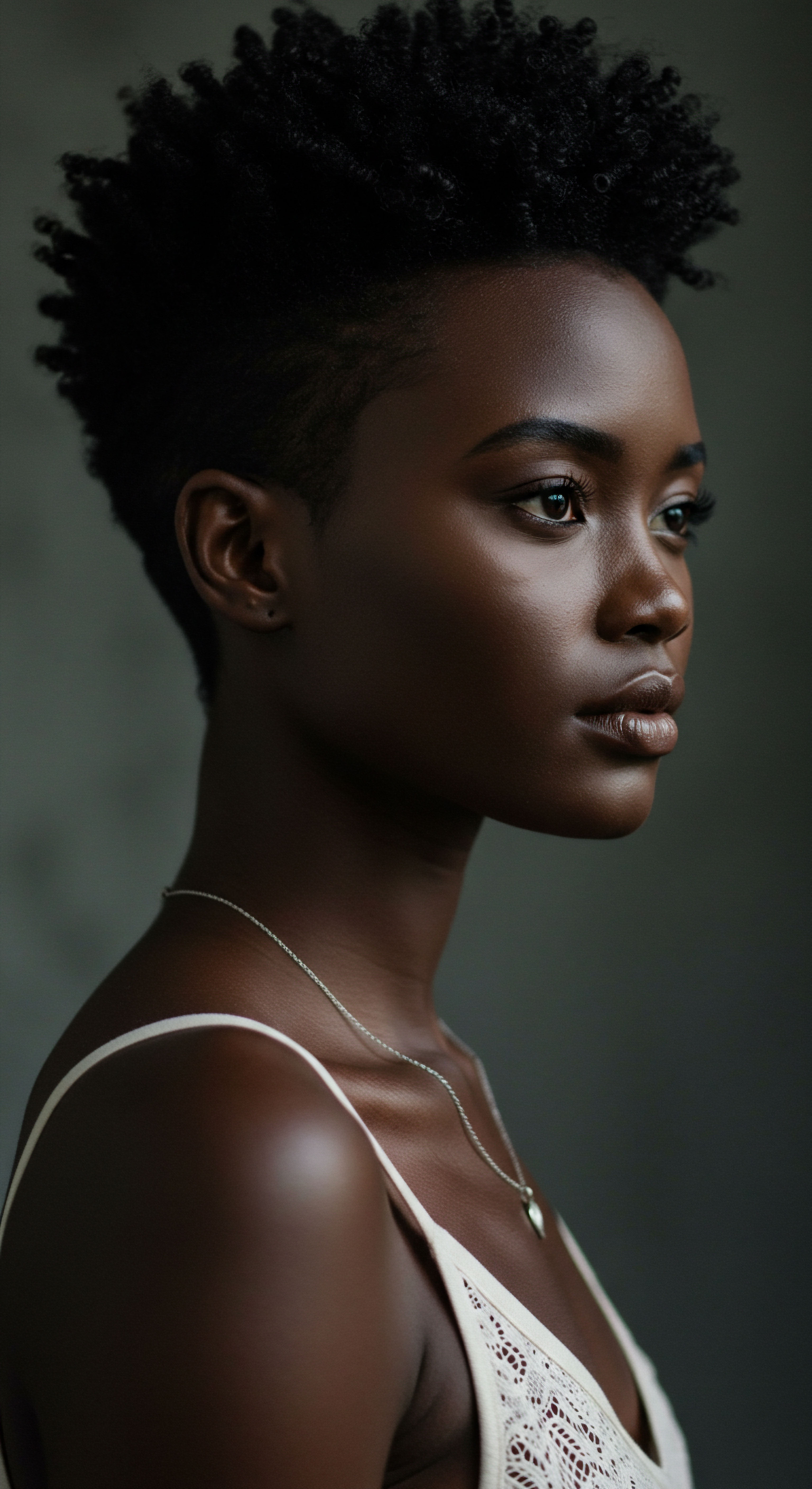
Roots
The journey of understanding textured hair begins not with a product aisle or a salon chair, but with a quiet recognition of what lies beneath the surface, both within each strand and across generations. It starts with a feeling, a gentle hum of ancestral memory that whispers of hair as a living archive, a repository of stories, status, and spirit. Before the advent of modern science, people knew hair through observation, through touch, through the rhythm of daily life and communal practices.
This innate wisdom, passed down from elder to child, forms the very foundation of what we now call hair protection. It is a grounding presence, a deep knowledge of the hair’s inherent needs and vulnerabilities, long before molecular structures were mapped or chemical bonds understood.
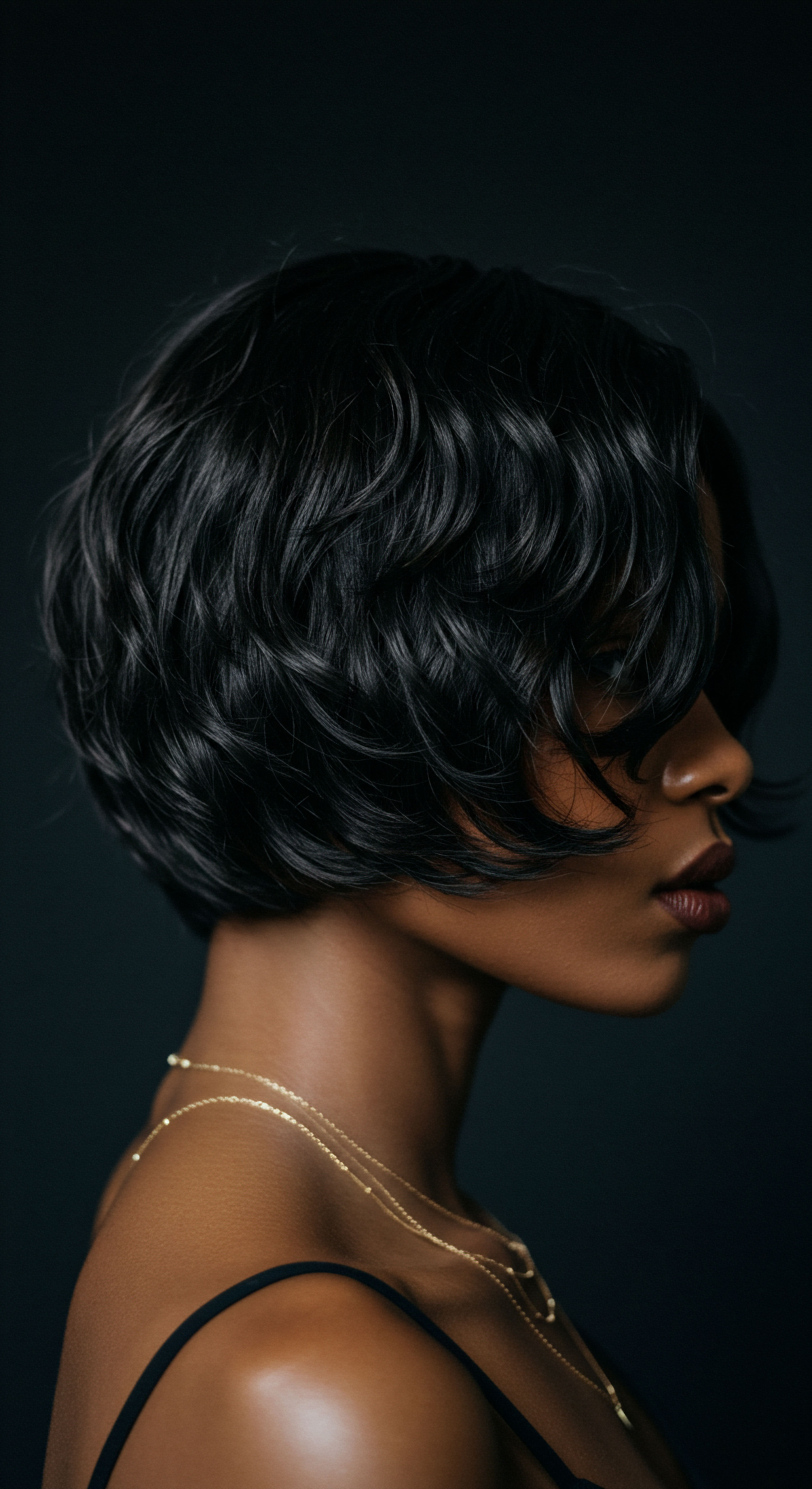
What Defines Textured Hair’s Intrinsic Needs?
Textured hair, with its unique coil, curl, and wave patterns, possesses distinct characteristics that differentiate it from straighter hair types. Its natural architecture, a helical spiral, presents specific needs for hydration and gentle handling. The twists and turns along each strand mean that the scalp’s natural oils, sebum, face a more challenging path to travel down the hair shaft, leaving the ends particularly susceptible to dryness. This inherent dryness, combined with the structural points where the hair bends, renders textured hair more prone to breakage if not handled with mindful care.
Ancient practices intuitively addressed these concerns, recognizing that moisture and minimal manipulation were paramount for preserving hair’s strength and vitality. They understood that external elements, like sun and wind, could strip hair of its natural lubrication, and thus, protective measures became central to their daily and ceremonial routines.
Consider the Himbe People of Namibia, whose traditional practices stand as a powerful testament to this understanding. They coat their hair with otjize, a mixture of ochre, butterfat, and herbs, not only for aesthetic and cultural purposes but also as a practical shield against the harsh desert sun and dry air. This ancient blend acts as a natural conditioner and sealant, protecting the hair from environmental damage and retaining moisture, a concept strikingly similar to modern leave-in conditioners and hair butters. This traditional method, born of necessity and deep environmental awareness, illustrates a profound grasp of textured hair’s need for constant moisture and physical protection.
The enduring wisdom of ancestral hair practices offers a gentle guide to understanding textured hair’s fundamental needs for preservation.
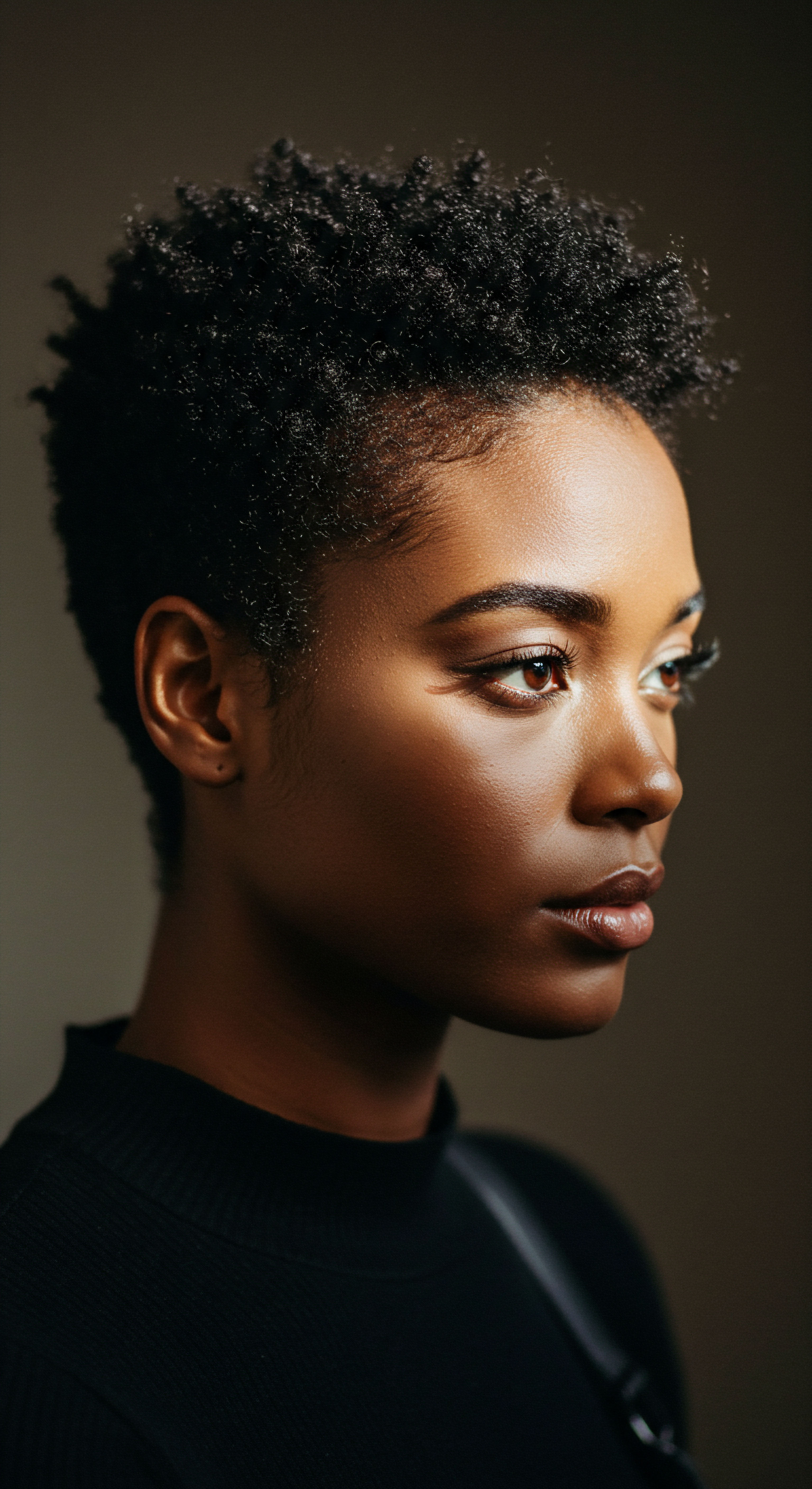
How Did Early Societies Perceive Hair Health?
In many ancient African societies, hair was more than just an adornment; it was a profound symbol, a method of communication, and a connection to the spiritual realm. Hairstyles conveyed social status, age, marital status, ethnic identity, religion, wealth, and rank within the community. The condition of one’s hair reflected their well-being, both physical and spiritual. A well-kept head of hair signaled health, prosperity, and connection to one’s lineage.
Conversely, undone hair could signify grief, illness, or neglect. This deep cultural reverence meant that hair care was not a superficial act but a meaningful ritual, often performed communally, strengthening social bonds and transmitting cultural knowledge.
The very act of caring for hair was a shared experience, particularly among women. Mothers, aunts, and grandmothers would gather to braid, oil, and adorn hair, passing down techniques and stories. This communal aspect fostered a sense of belonging and reinforced the importance of hair care as a legacy.
The ingredients used were often sourced directly from nature – plant extracts, natural butters like shea, and various oils – chosen for their known benefits in conditioning, cleansing, and strengthening hair. These practices, rooted in a deep respect for both hair and nature, laid the groundwork for modern protective care by instinctively addressing the structural and environmental challenges faced by textured hair.
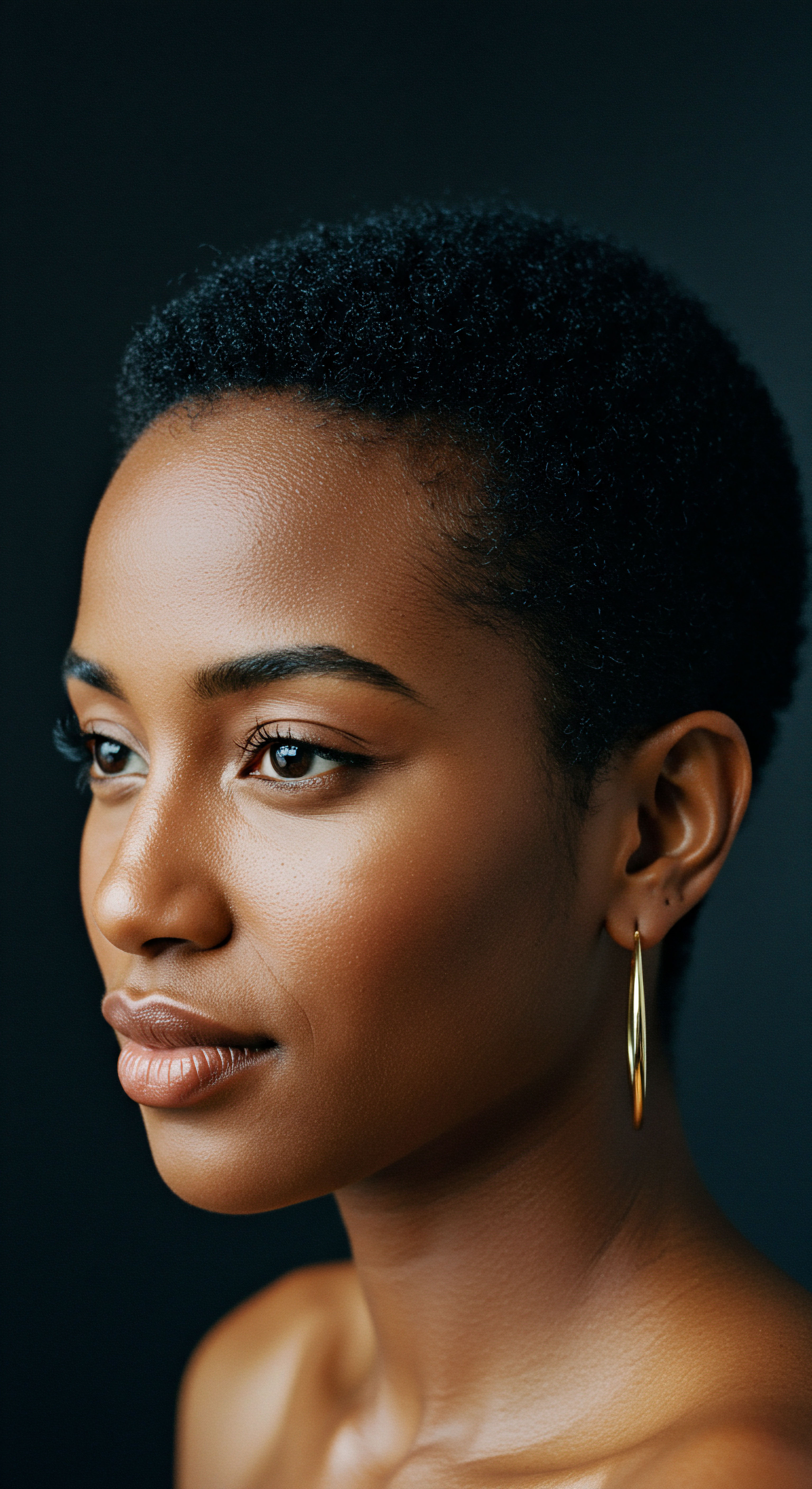
Ritual
Stepping from the quiet wisdom of roots, we arrive at the realm of ritual, where ancient understanding transforms into daily practices and mindful movements. Here, the subtle promptings of hair’s nature meet the hands that care for it, creating a symphony of purposeful actions. This section considers the ways traditional hair care rituals, often steeped in communal activity and natural elements, laid the groundwork for contemporary methods of safeguarding textured strands. It is a consideration of how ancestral techniques, refined through generations, continue to whisper their secrets to us, offering pathways to greater hair health and resilience.

What Traditional Hair Practices Provided Protection?
Traditional hair care practices across African and diasporic communities were inherently protective, designed to minimize manipulation, retain moisture, and shield hair from environmental aggressors. These practices were not simply about styling; they were about preservation.
- Braiding ❉ From the ancient cornrows of Africa dating back to 3500 BC to the intricate box braids of Egypt, braiding has always served as a primary protective method. Braids keep hair strands grouped together, reducing tangling and breakage that can occur from daily combing and environmental exposure. This method also helps to seal in moisture and prevent excessive drying.
- Oiling ❉ The consistent application of natural oils and butters was a central practice. Ingredients like shea butter, coconut oil, and castor oil were used to lubricate the hair shaft, seal moisture, and condition the scalp. This created a barrier against moisture loss and added a layer of protection against physical damage. The “Indian Oiling Method,” for example, uses oils like coconut and amla to strengthen hair, improve elasticity, and increase moisture retention.
- Hair Wrapping and Covering ❉ Headwraps, scarves, and bonnets were, and remain, vital tools for protection. Historically, these coverings shielded hair from sun, dust, and other elements during the day, and at night, they prevented friction against rough sleeping surfaces, which can lead to frizz and breakage. This practice intuitively understood the importance of minimizing physical stress on delicate hair strands.
The rhythmic motions of traditional hair care, from braiding to oiling, represent a purposeful dedication to hair preservation.

How Do Modern Protective Styles Mirror Ancient Wisdom?
The core principles of traditional hair protection find direct echoes in modern textured hair care. Today’s popular protective styles and product formulations often replicate the fundamental benefits offered by ancestral methods.
Consider the prevalence of modern Protective Styles like twists, faux locs, and Bantu knots. These styles, while often seen as fashion statements, function in much the same way as their ancient counterparts ❉ they tuck away the hair ends, minimize daily manipulation, and allow for extended periods between styling sessions. This reduction in handling is crucial for preventing mechanical damage to textured hair, which is inherently more fragile due to its curl pattern. The practice of applying leave-in conditioners, oils, and styling creams before installing these styles mirrors the traditional use of natural butters and oils to moisturize and seal the hair.
The modern “LOC method” (Liquid, Oil, Cream), a popular regimen for textured hair, directly aligns with the ancient practice of layering moisture and sealants to retain hydration. This method involves applying a water-based product (liquid), followed by an oil, and then a cream or butter to lock in the moisture, directly reflecting the wisdom of historical applications.
| Traditional Practice Braiding and Twisting |
| Core Protective Benefit Minimizes manipulation, reduces tangling, protects ends. |
| Modern Parallel Box Braids, Senegalese Twists, Faux Locs, Bantu Knots. |
| Traditional Practice Oiling and Butters |
| Core Protective Benefit Moisture retention, lubrication, environmental shield. |
| Modern Parallel Leave-in conditioners, hair oils, hair butters, LOC method. |
| Traditional Practice Hair Wrapping and Covering |
| Core Protective Benefit Prevents friction, shields from elements, preserves style. |
| Modern Parallel Silk/satin bonnets, scarves, pillowcases, headwraps. |
| Traditional Practice Herbal Cleansers |
| Core Protective Benefit Gentle cleansing, scalp health, nutrient delivery. |
| Modern Parallel Sulfate-free shampoos, co-washes, herbal rinses. |
| Traditional Practice These parallels show a continuous thread of wisdom guiding textured hair care. |

What is the Role of Gentle Care in Modern Regimens?
The wisdom of gentle care, a silent tenet of traditional practices, holds significant weight in modern textured hair regimens. Centuries ago, the communal nature of hair care meant that hands moved with patience and precision, avoiding harsh pulling or aggressive detangling. This gentle approach was born from an intuitive understanding of textured hair’s delicate nature. Today, this translates into specific techniques ❉ finger detangling, using wide-tooth combs, and applying products with a light hand.
The aim is to reduce mechanical stress, which is a leading cause of breakage in coily and curly hair types. This careful handling, whether in ancient African villages or contemporary salons, acknowledges that textured hair thrives when treated with respect for its unique structure. The deliberate movements of applying oils, separating strands, and forming protective styles are a testament to this enduring principle, ensuring hair remains resilient against the rigors of daily life.

Relay
Our consideration now shifts to the relay, the complex transmission of traditional hair wisdom across time and continents, its reception in modern contexts, and the deeper scientific and cultural conversations it provokes. This is where the enduring legacy of ancestral practices meets contemporary understanding, where science often validates what generations already knew by heart. It is a journey into the interplay of identity, societal pressures, and the profound resilience of textured hair care traditions.

How Do Cultural Contexts Shape Hair Protection Perceptions?
The perception and practice of hair protection are deeply shaped by cultural contexts, often extending beyond mere aesthetics to encompass identity, resistance, and self-worth. In many African and diasporic communities, hair is more than a physical attribute; it is a symbol of heritage and a visual representation of cultural pride. The historical subjugation of Black hair, particularly during periods of slavery where traditional styles were often forcibly removed or denigrated, instilled a profound connection between hair care and the assertion of identity.
Enslaved Africans adapted their traditional practices, using headwraps not only for protection but also as a quiet act of resistance and cultural preservation. This historical backdrop means that for many with textured hair, choosing a protective style is not simply a practical decision; it is a statement, a connection to ancestry, and a celebration of self.
The modern natural hair movement, for instance, gained significant momentum by encouraging individuals to reject Eurocentric beauty standards that favored straightened hair and instead, to celebrate their natural coils and curls. This movement is a contemporary relay of ancestral defiance, emphasizing that hair protection is not just about physical health but also about psychological well-being and cultural affirmation. Research highlights the significant psychological impact of hair-based stigma, with many Black individuals experiencing anxiety, negative self-image, and chronic stress due to societal pressures to conform. The act of wearing traditional protective styles, therefore, becomes a powerful counter-narrative, a means of reclaiming beauty standards and fostering self-acceptance.
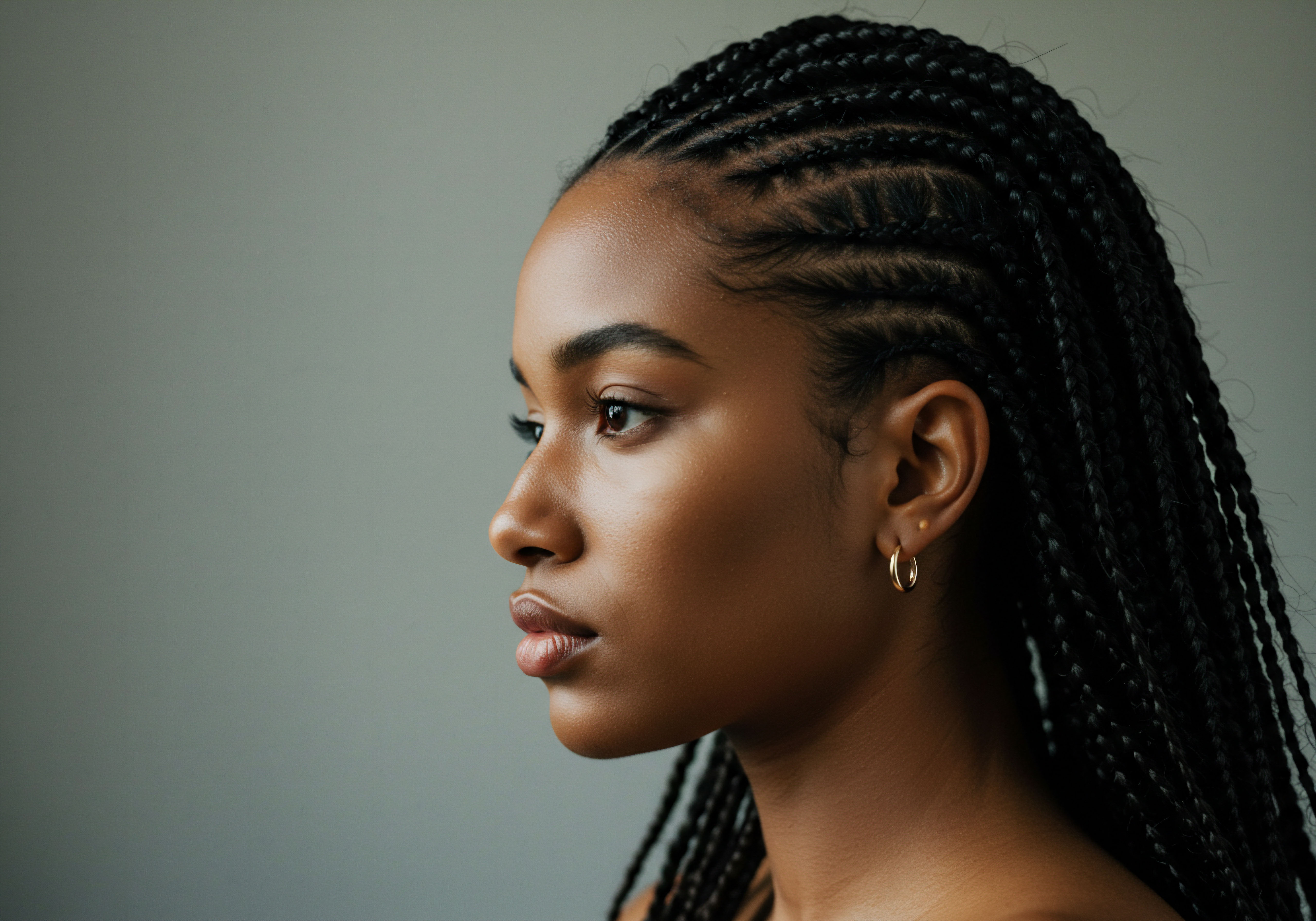
What is the Scientific Basis of Traditional Protective Practices?
Many traditional protective hair care practices, developed through generations of observation and experiential knowledge, possess a strong scientific basis that modern trichology and cosmetic chemistry now affirm. The principles behind these practices often align with contemporary understanding of hair structure and damage prevention.
For example, the consistent use of oils and butters in traditional African hair care directly addresses the unique lipid composition of textured hair. Research indicates that Afro-textured hair has relatively lower internal lipid levels compared to European and Asian hair, making it more prone to dryness. Traditional oiling practices, using substances like shea butter or castor oil, compensated for this by providing external lipids that sealed the cuticle, reduced moisture loss, and added a protective layer against environmental factors.
This effectively reduced friction, minimized tangling, and prevented breakage, which are common challenges for hair with a high curl density. The practice of sectioning hair for care and styling, common in traditional braiding rituals, also reduces mechanical stress on individual strands, a principle still recommended by hair scientists today.
A striking illustration of traditional wisdom meeting modern scientific scrutiny comes from the widespread historical use of certain plant extracts. For instance, Amla (Indian Gooseberry), a staple in Ayurvedic hair care for centuries, was traditionally used to promote hair growth and strengthen strands. Modern scientific studies have indeed shown Amla to be rich in antioxidants and vitamin C, which contribute to scalp health and can help fortify hair follicles, thereby reducing hair fall and promoting healthier growth. This convergence of ancient empirical knowledge and contemporary laboratory findings underscores the deep, often unwritten, scientific understanding embedded within traditional practices.
The deep-seated wisdom of traditional hair practices, often validated by contemporary science, offers a profound understanding of textured hair’s resilience.
Another compelling point is the impact of Traction Alopecia, a condition where prolonged tension on the hair follicle leads to hair loss, particularly along the hairline. While protective styles are designed to safeguard hair, certain modern adaptations, especially those that are too tight or worn for extended periods without proper breaks, can inadvertently cause this condition. This presents a nuanced perspective ❉ traditional practices, while protective, were often balanced with periods of rest for the hair and scalp, or involved lighter tension.
The concern around traction alopecia, as highlighted by dermatological research, urges a return to the mindful application of tension and the importance of scalp health, a concept deeply ingrained in traditional care that prioritized overall well-being. This subtle yet significant difference points to the need for a deeper appreciation of the nuances within traditional methods, beyond their mere outward appearance.
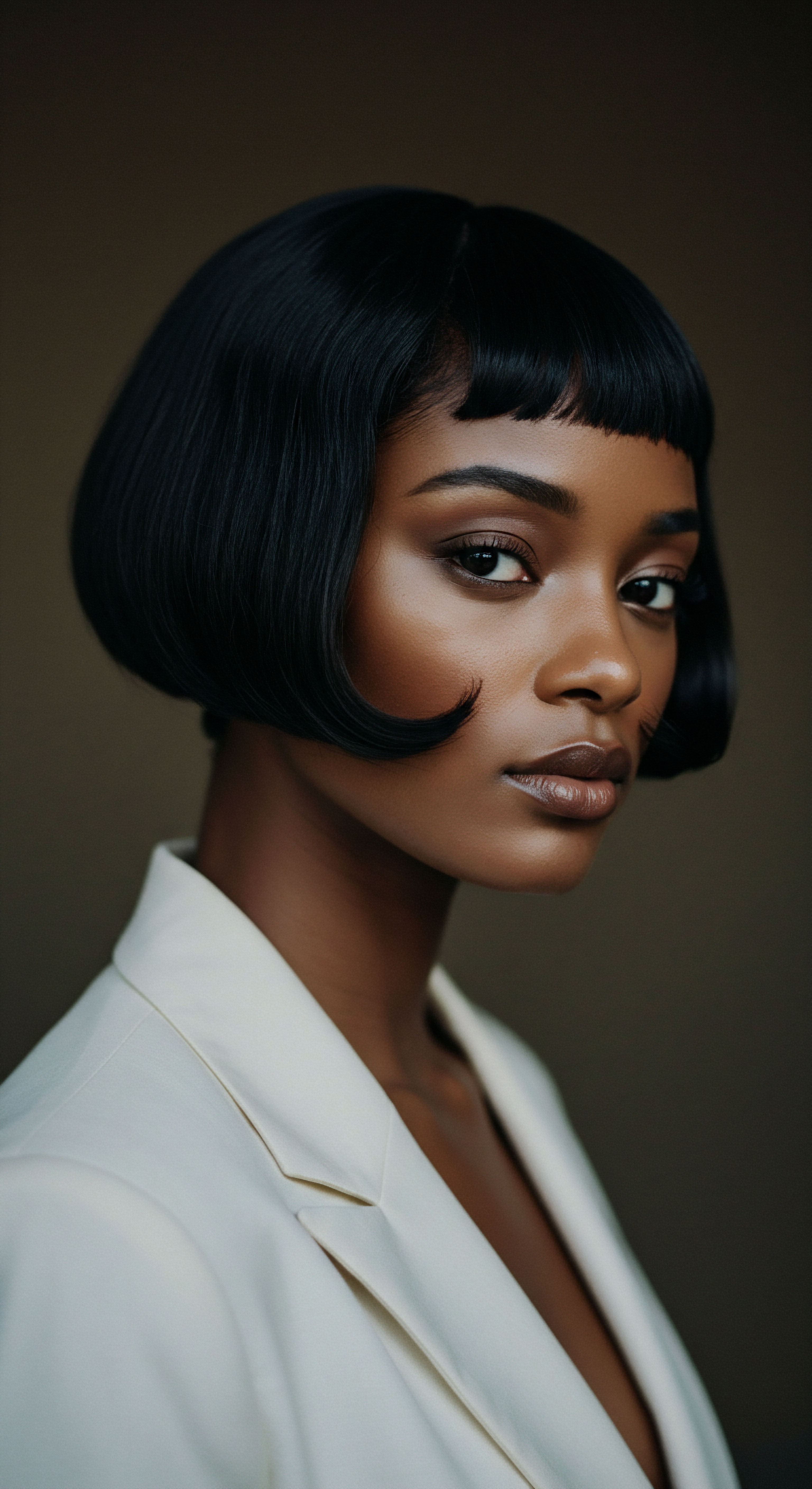
What Are the Societal and Economic Implications?
The relay of traditional hair care practices into modern society carries significant societal and economic implications. The rise of the natural hair movement has created a substantial market for products tailored to textured hair, many of which draw inspiration from traditional ingredients and methods. This shift has led to a re-evaluation of beauty standards and a greater acceptance of natural hair in mainstream spaces. However, it also presents complexities.
The commercialization of traditionally rooted hair care can sometimes lead to cultural appropriation, where practices are adopted without acknowledging their origins or the communities from which they stem. This can dilute the cultural significance of these practices and displace traditional practitioners. Moreover, while the market for textured hair products has grown, disparities in access to quality products and culturally competent hair care professionals can still persist, particularly in marginalized communities.
Despite these challenges, the economic impact is undeniable. The textured hair care market is a multi-billion dollar industry, driven by consumers seeking products that cater to their unique hair needs. This economic power, in turn, can create opportunities for Black-owned businesses and entrepreneurs who are deeply connected to the cultural heritage of textured hair. It allows for a greater diversity of products and services that truly understand and celebrate the nuances of coils, curls, and waves.

Reflection
As we step back from the intricate dance of tradition and modernity in textured hair care, a profound truth emerges ❉ the past is not merely a relic but a living, breathing guide. The gentle wisdom of ancestral practices, born of necessity and deep respect for hair’s inherent nature, continues to shape our present understanding of protection. We see how ancient rituals, once passed down through the warmth of communal gatherings, now find their echoes in scientific validations and contemporary routines. This journey through the roots, rituals, and relay of textured hair care reveals a legacy of resilience, a quiet strength that has navigated societal shifts and embraced scientific discovery.
The conversation around textured hair protection remains dynamic, inviting us to honor the origins of its wisdom while continuing to seek new avenues for its well-being. It is a continuous conversation, a delicate balance between preserving what has always been known and discovering what can still be.

References
- Byrd, Ayana D. and Lori L. Tharps. Hair Story ❉ Untangling the Roots of Black Hair in America. St. Martin’s Press, 2001.
- Jacobs-Huey, Lanita. From the Kitchen to the Parlor ❉ Language and Becoming in African American Women’s Hair Care. Oxford University Press, 2006.
- Mercer, Kobena. Welcome to the Jungle ❉ New Positions in Black Cultural Studies. Routledge, 1994.
- Patton, Tracey Owens. Hair Matters ❉ Beauty, Power, and Black Women’s Consciousness. Palgrave Macmillan, 2006.
- Rooks, Noliwe M. Hair Raising ❉ Beauty, Culture, and African American Women. Rutgers University Press, 1996.
- Banks, Ingrid. Hair Matters ❉ African American Women and the Cultural Politics of Hair. New York University Press, 2000.
- Davis-Sivasothy, Audrey. The Science of Black Hair ❉ A Comprehensive Guide to Textured Hair Care. Sivasothy, 2011.
- Ellington, Tameka. Textures ❉ The History and Art of Black Hair. Schiffer Publishing, 2021.
- Massey, Lorraine. Curly Girl ❉ The Handbook. Workman Publishing Company, 2010.
- Byrd, Ayana D. and Lori L. Tharps. Hair Story ❉ Untangling the Roots of Black Hair in America. St. Martin’s Press, 2014.
- Donahoo, Sonia. African American Women and Hair ❉ Identity, Self-Esteem, and the Beauty Industry. Lexington Books, 2019.